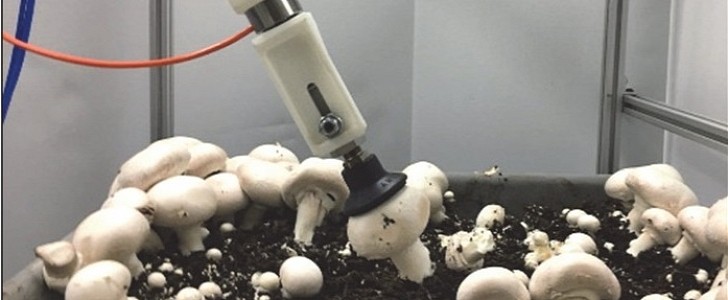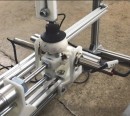Turns out the mushroom industry in Pennsylvania produces two-thirds of the mushrooms grown in the United States, which requires a lot of work. The grueling, intensive job has led to a labor shortage, but researchers might have an answer to the problem: a robotic mushroom picker that can automate the harvesting process.
Americans like their mushrooms, with almost 900 million pounds of button mushroom consumed in a single year, according to professor Long He from the Pennsylvania State University. That means $1.3 billion worth of edible fungi. The professor also added that labor costs for mushroom harvesting account for 15 to 30 percent of the production value.
In addition to the high costs, the mushroom industry is also facing challenges in terms of the labor force, as mushroom harvesting is a difficult and tiring job.
The robotic harvesting system prototype developed by researchers at the Penn State’s College of Agricultural Sciences could reduce these costs and also solve the labor shortage Pennsylvania’s dealing with.
The machine was designed to pick and trim button mushrooms grown in a shelf system. It uses a suction cup mechanism with adjustable pressure and can both pick the mushrooms as well as trim the ends of their stems.
While mushroom harvesting seems like an easy task, it in fact requires some specific skills professional pickers acquire over time. Researchers conducted 70 picking tests at the Fruit Research and Extension Center in Biglerville, in order to evaluate the robot. The test results proved to be very encouraging, with a 94.2 percent success rate at picking the mushrooms, and a 97 percent one at trimming the stems.
Researchers haven’t offered any details regarding the future of the harvesting robot or when we can expect to see it in production. They are however continuing their work to improve those already impressive figures by further optimizing the form of the suction cup.
The research was supported by the Penn State Mushroom Research Competitive Grants Program.
In addition to the high costs, the mushroom industry is also facing challenges in terms of the labor force, as mushroom harvesting is a difficult and tiring job.
The robotic harvesting system prototype developed by researchers at the Penn State’s College of Agricultural Sciences could reduce these costs and also solve the labor shortage Pennsylvania’s dealing with.
The machine was designed to pick and trim button mushrooms grown in a shelf system. It uses a suction cup mechanism with adjustable pressure and can both pick the mushrooms as well as trim the ends of their stems.
While mushroom harvesting seems like an easy task, it in fact requires some specific skills professional pickers acquire over time. Researchers conducted 70 picking tests at the Fruit Research and Extension Center in Biglerville, in order to evaluate the robot. The test results proved to be very encouraging, with a 94.2 percent success rate at picking the mushrooms, and a 97 percent one at trimming the stems.
Researchers haven’t offered any details regarding the future of the harvesting robot or when we can expect to see it in production. They are however continuing their work to improve those already impressive figures by further optimizing the form of the suction cup.
The research was supported by the Penn State Mushroom Research Competitive Grants Program.





